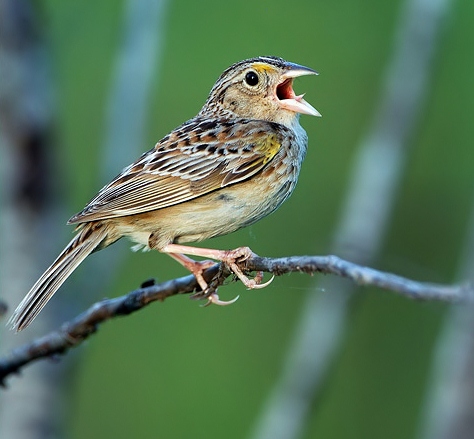 |
| Photo by Raymond Barlow (Lee’s Birdwatching Adventures) |
Common name:
grasshopper sparrow (en); escrevedeira-dos-gafanhotos (pt); bruant sauterelle (fr); sabanero chapulín (es); heuschreckenammer (de)
Taxonomy:
Order Passeriformes
Family Emberizidae
Range:
This species breeds in most of the United States and in southern Canada. There are also some breeding populations in Central America, Colombia and the Caribbean. The more northern population migrate south to winter in the southern United States, Mexico and through Central America down to Panama. They also winter in Cuba.
Size:
These birds are 11-13 cm long and weigh 14-20 g.
Habitat:
The grasshopper sparrow is found in a variety of open habitats, namely grasslands, upland meadows, pastures, hayfields, abandoned fields and scrublands. They are found from sea level up to an altitude of 1.300 m.
Diet:
They mainly eat insects and seeds, mainly grasshoppers such as Xiphidium, Scudderia, Hippiscus, Melanopus and Cordillacris occipitalis. They also eat other insects, spiders and the seeds of sedges and panic grass.
Breeding:
Grasshopper sparrows breed in April-November. The female build a nest, a cup made of grasses, placed on the ground with a roof of grasses. There the female lays 3-6 white eggs with reddish-brown speckles. The eggs are incubated by the female for 11-13 days. The chicks leave the nest after 6-9 days but only start to fly a few days later.
Conservation:
IUCN status – LC (Least Concern)
This species has a very large breeding range, but the population has undergone a large decline of 65% over the last 4 decades, mostly due to habitat loss and fragmentation through the conversion of natural prairies into intensive agricultural land.







